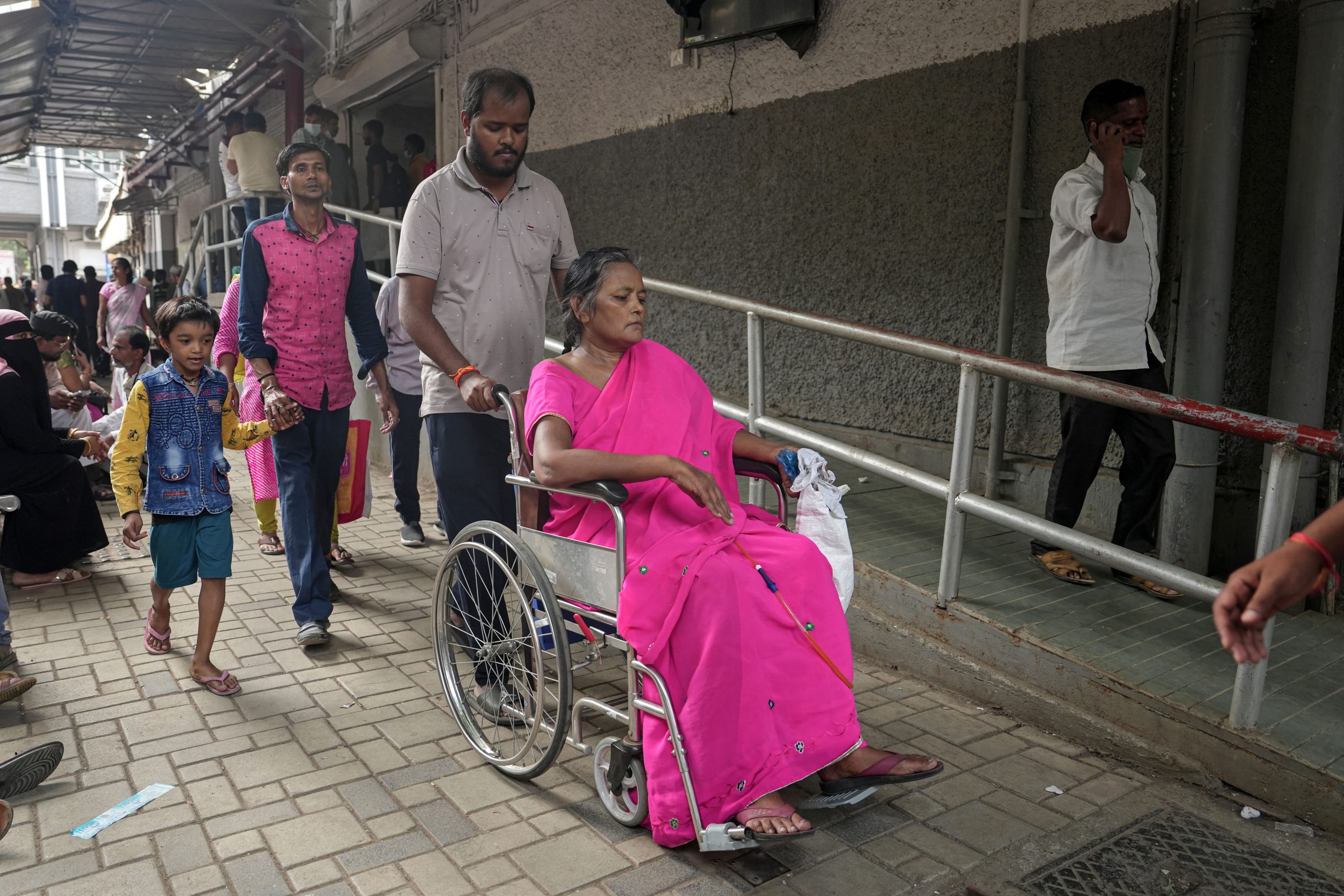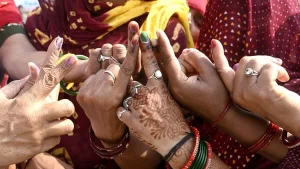Right to Healthcare: What You Need To Know About Maharashtra’s Public Health Services

Maharashtra scores 23 out of 100, a disturbingly low score, in its public healthcare systems according to a recent report released by Jan Arogya Abhiyan—a coalition of NGOs and health professionals, ahead of the state’s assembly elections. The state is short of specialist doctors with 61% of positions in rural hospitals vacant. The state ranks 13th in hospital bed availability per the report. The inadequacy of infrastructure and public provisioning of healthcare came to the fore in the most tragic manner in Nanded’s Shankarrao Chavan Government Medical College where 31 children died in the SGMCH in one week between 30 September to 7 October; 22 of these were new born babies. Our ground report revealed a severe shortage of functioning warmers for pre-term babies.
“Ever since the government has announced all the treatments, surgeries completely free, there has been a massive increase in patients seeking treatments in the government hospitals. But infrastructure and human resources have not increased in proportion which creates a pressure not only on the doctors but on the overall ecosystem”, said a doctor working at SGMC on the condition of anonymity.
“This is a 500 bed capacity hospital which is now treating at least 1200-1300 patients everyday. It is inconvenient for patients but we try to save every life. We don’t send patients back home because of insufficient infrastructure.”
In 2023-24, Maharashtra allocated Rs 27,748 crore for health, i.e 4.6% of the total budget. This is lower than the average health allocation (6.2%) by state governments. Maharashtra spends Rs 1,979 per capita on health, which is lower than the national average of Rs 2,342. This is the sixth lowest per capita spend on health among all the states. As of October 2024, only 2% of the budget for Urban Health and Wellness Centres (HWCs) and 6% for essential supplies, including medicines, had been used. Government Current Health Expenditure attributed to Primary Care is 43.4%, Secondary Care is 35.2%, Tertiary care is 9.6% per the State health accounts estimates for Maharashtra.
Funds for key schemes like the Mahatma Jyotiba Phule Jan Arogya scheme have been cut from Rs 8 crore in 2023-24 to Rs 6.27 crore in 2024-25. This forces families like Anjali Waghmare’s who died along with her baby during childbirth at the Shankarrao Chavan Government Medical College in Nanded, to borrow beyond their means and enter into a vicious cycle of debt. Maharashtra’s Out of Pocket Expenditures (OOPE) per capita is Rs 2779, higher than the national spend of Rs 2,289 per the State health accounts estimates. An average delivery in the state costs Rs 2,966, slightly higher than the national average of Rs 2,916 per the NHFS-5 released in 2021. In Adivasi areas, access to sonography machines is poor, reported the Jan Arogya Abhiyan report.
While the state’s infant mortality rate (23.2%) is lower than the national average of 35.2, it has barely dipped since 2014-15 when it was 23.7. In rural Maharashtra, the rate has remained unchanged at 24 since 2014-15. In contrast, the state has the lowest maternal mortality ratio of 33 deaths per 1 lakh live births per the NHFS-5 data. More than half of the state’s women (54%) have anaemia.
The state’s Aapala Dawakhanas introduced by CM Eknath Shinde, to bring clinics closer and accessible to people are only able to cater to only 10% of outpatients, said the Jan Arogya Abhiyan report.
Health has found a central focus in political party manifestos in these elections. The Mahavikas Aghadi, in a first for the state, has proposed to enact a ‘Right to Healthcare’ policy for Maharashtra and paving a pathway for Universal Health Care across the state. It promises to gradually increase the healthcare budget to 8% of the total state budget and expansion of the Mahatma Jyotiba Phule Jan Arogya scheme to cover lifestyle diseases. It also promises to improve infrastructure such as 100 bed hospitals in each taluka and recruit adequate healthcare personnel. It has promised to provide free vaccines for cervical cancer for girls between ages of 9 and 16 and free treatment for breast, cervical and ovarian cancer for women.
You can read our three-part series on gender and cancer here.
The ruling BJP’s manifesto under the “Mission Swasth Maharashtra” program promises to increase the number of medical professionals, opening PM Jan Aushadhi Kendras and expansion of the Ayushman Bharat scheme.
Behanbox spoke to Abhay Shukla, a Maharashtra based doctor, public health expert and national convenor of Jan Aarogya Abhiyan who has played a crucial role in shaping the ‘Right to Health’ policy in the state. He outlined the policy priorities for the next government in improving public healthcare access.
Behanbox: There has been a significant change in these elections where health has taken a centrestage. All political parties have made several promises to improve healthcare access. How realistic are they in terms of fulfilment and budgetary allocations.
The promises that you see in the manifesto of Maha Vikas Aghadi (MVA) have been suggested by Jan Aarogya Abhiyan. MVA has taken many issues from our manifesto titled ‘People’s manifesto of health’ and the ‘Report card’ (governance and accountability initiative) prepared by Jan Aarogya Abhiyan. They have incorporated some of the issues we have raised repeatedly. ‘Right to health’ is one such important issue, one that has seen very little debate in Maharashtra by the government or any political party.
There are three promises. The first one is around improved health budgets. We have said that health expenditure must be around 8% of the total health budget and the need for expansion of public health services such as building 100 bed district hospitals. A ‘Right to health’ policy can lay a roadmap for future health agenda.
Corruption and wasteful expenditure should be tackled. Medical procurement needs to be transparent and efficient like Tamil Nadu.
Second is the ‘patients rights charter’, for which the government does not need additional allocation. It just needs to issue a circular, conduct inspections and check if the hospitals are displaying these charters. The state should announce that hospitals failing to comply with the Maharashtra Nursing Homes Registration Act, 1949 rules, risk having their registrations revoked with a 15-day notice for closure if violations persist. There is an existing law but hospitals don’t follow and when health activists keep a check on this they are being jailed. There are more than 5,000 private hospitals in Maharashtra and they are not following this law.
Third, we have suggested a community based monitoring for health services with the active participation of Panchayats, civil society organisations and communities. Many funds such as the funds under the Panchayats (Extension to Scheduled Areas) Act (PESA), funds under the 12th Finance Commission which eventually lapse because of non utilisation or under utilization. Maharashtra has shown earlier that funds can be utilised effectively with local participation.
Money is not an issue, political will is. All these measures can be implemented within the first 3-6 months. Maharashtra is the richest state in India. Of the top 100 billionaires, 38 live in Maharashtra. This is the state which has the highest GDP. If the state taxed mining and alcohol like in Tamil Nadu, generating an additional 15,000 crore is possible.
BB: Why do you think that health figures so prominently in the party manifestos this election season Maharashtra?
This is the first state election in Maharashtra after the Covid-19 pandemic, where the state was badly affected. Since then, the importance of public health might have preoccupied the minds of politicians. Also, public health is less complicated than other development issues which are more complex involving land acquisition to displacement of people.
Health and education affect middle classes too with increased commercialisation and high out of pocket expenditures. This is why parties are promising to expand the scope of the Mahatma Phule Jan Aarogya Yojana to include families who are not ‘Below the Poverty Line’.
The Jan Aarogya Abhiyan has been advocating for health issues to be at the centre of the political agenda both during the Lok Sabha as well as the Maharashtra elections.
BB: There have been promises about providing free vaccines for cervical cancer for girls between 9 and 16 years. What is the readiness for implementing this? What other women’s health issues need attention that political parties have missed out?
95 % of the vaccines are now being manufactured by the private sector. As we saw during Covid-19, the government will have to buy it from the private sector. Since our health system is fairly efficient and not completely broken, it can be delivered.
As important as the issue is, there are other areas of women’s health that need urgent attention from the next government. These include anaemia, maternal health, maternal mortality, malnutrition among women, basic abortion services, sonography during pregnancy among others. Jan Arogya Abhiyan’s activists have done surveys on childbirth facilities at Public Health Centres (PHCs) and found that even regular,normal deliveries are not performed here and referred to taluka level rural hospitals. Then strengthening PHCs for maternal health care must be a priority.
Read more of BehanBox’s coverage of Maharashtra elections here.
We believe everyone deserves equal access to accurate news. Support from our readers enables us to keep our journalism open and free for everyone, all over the world.




